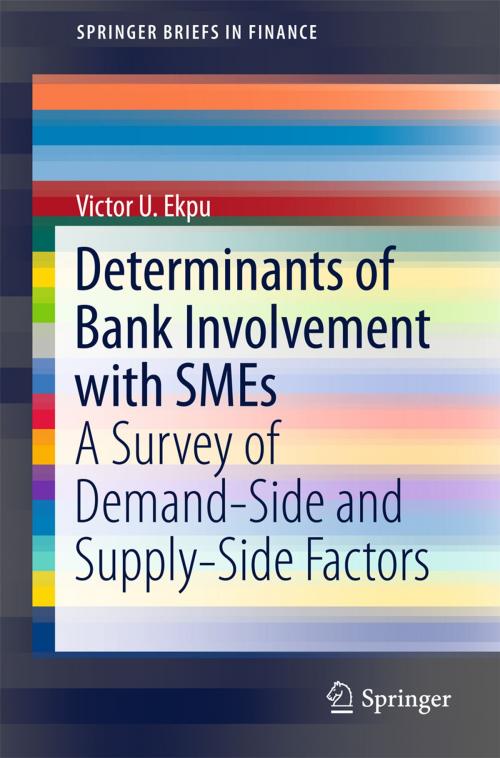Determinants of Bank Involvement with SMEs
A Survey of Demand-Side and Supply-Side Factors
Business & Finance, Finance & Investing, Finance, Entrepreneurship & Small Business, Entrepreneurship| Author: | Victor U. Ekpu | ISBN: | 9783319258379 |
| Publisher: | Springer International Publishing | Publication: | December 23, 2015 |
| Imprint: | Springer | Language: | English |
| Author: | Victor U. Ekpu |
| ISBN: | 9783319258379 |
| Publisher: | Springer International Publishing |
| Publication: | December 23, 2015 |
| Imprint: | Springer |
| Language: | English |
This book is a comprehensive, yet concise text that brings together all aspects of SME banking theories and empirical studies in one text. The book contains the latest policy debates on money creation and credit rationing and the relative role of demand-side and supply-side factors affecting SME financing. Readers will understand the borrower-specific, lender-specific and business environment drivers of bank finance for SMEs as well as the determinants of loan contract terms, particularly the risk premium and collateral. Readers will also understand how loan officers acquire proprietary information on SMEs and apply various lending techniques, such as financial statement lending, relationship lending and credit scoring to the loan underwriting process. In addition, the book also features recent trends on the rise of alternative finance intermediaries such as online peer-to-peer lenders and the competitive implications for traditional banks providing loans to SMEs. Findings from this work will thus be of particular interest to commercial bankers, bank-dependent small business borrowers as well as policy makers, and researchers in central banks, development banks, development agencies and international financial institutions.
This book is a comprehensive, yet concise text that brings together all aspects of SME banking theories and empirical studies in one text. The book contains the latest policy debates on money creation and credit rationing and the relative role of demand-side and supply-side factors affecting SME financing. Readers will understand the borrower-specific, lender-specific and business environment drivers of bank finance for SMEs as well as the determinants of loan contract terms, particularly the risk premium and collateral. Readers will also understand how loan officers acquire proprietary information on SMEs and apply various lending techniques, such as financial statement lending, relationship lending and credit scoring to the loan underwriting process. In addition, the book also features recent trends on the rise of alternative finance intermediaries such as online peer-to-peer lenders and the competitive implications for traditional banks providing loans to SMEs. Findings from this work will thus be of particular interest to commercial bankers, bank-dependent small business borrowers as well as policy makers, and researchers in central banks, development banks, development agencies and international financial institutions.















